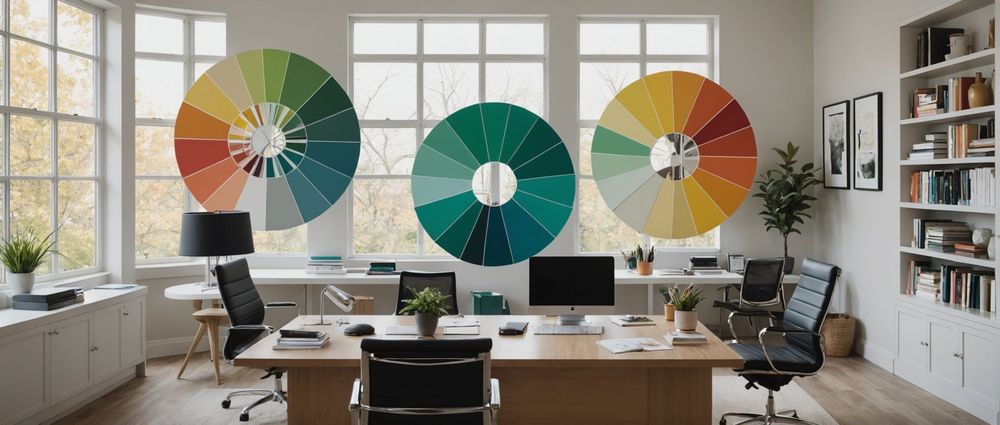Choosing the right colors that enhance your natural beauty can significantly affect your overall appearance and confidence. This article will guide you in discovering the shades that complement your skin tone, eye color, and hair color. By understanding your unique color palette, you can make informed choices about clothing, makeup, and accessories, ensuring you always look your best. Let’s delve deeper into the art of color analysis and how you can find your perfect shades.
The Importance of Color Analysis
Color analysis is a powerful tool that helps individuals understand which shades naturally enhance their features. Not all colors are created equal, and wearing the right ones can illuminate your complexion, brighten your eyes, and bring out a healthy glow. When you wear colors that complement your natural coloring, you not only look and feel better but also exude confidence and charm. Here are several key reasons to consider color analysis:
- Enhances your natural beauty.
- Boosts your confidence.
- Streamlines wardrobe choices.
- Helps in selecting flattering makeup shades.
- Promotes a cohesive personal aesthetic.
Identifying Your Undertone

The first crucial step in determining your perfect colors is to identify your skin undertone. Undertones generally fall into three categories: cool, warm, and neutral. To find out your undertone, consider the following methods:
- Vein Test: Look at the veins on the inside of your wrist. If they appear blue or purple, you likely have a cool undertone. If they look green, you have a warm undertone, and if it’s hard to tell, you might be neutral.
- Jewelry Test: Try wearing both silver and gold jewelry. If silver enhances your complexion, you have a cool undertone; if gold looks better, you’re warm. Neutral tones often look good in both.
- White Paper Test: Holding a sheet of white paper against your face will help you see your undertone more clearly. A pinkish hue indicates cool tones, while a yellowish tint suggests warmth.
Discovering Your Color Palette
Once you’ve identified your undertone, it’s time to explore the color palettes that will work best for you. Each undertone has its own set of colors that can enhance your look:
- Cool Undertones: Soft blues, lavender, emerald green, and cool grays are great choices.
- Warm Undertones: Earthy tones like oranges, yellows, warm reds, and olive green will complement your features.
- Neutral Undertones: You can mix colors from both sides, with soft peach, dusty pinks, turquoise, and jade being particularly flattering.
Understanding your color palette not only helps in shopping for clothes but also in choosing accessories and cosmetics, making your beauty routine simpler and more effective.
Applying Your Perfect Colors
With your chosen color palette in hand, it’s time to apply these insights into your everyday life. Start by gradually introducing these colors into your wardrobe, ensuring that your outfits combine well with your base pieces. When it comes to makeup, choose foundations and blushes that harmonize with your skin’s undertone; for instance, cool undertones may benefit from pink blushes, whereas warm undertones might shine with peach shades. Additionally, don’t hesitate to experiment with colors to find what truly resonates with you.
When selecting accessories, aim for pieces that highlight your color palette. For instance, a cool-tone individual might opt for silver or white gold accessories, while warm tones will look fantastic with gold and bronze pieces. Experimenting with differing shades can help you discover unique combinations that make you feel most comfortable and confident.
Conclusion
Understanding which colors complement your skin tone, eye color, and hair color can unlock the potential to elevate your style and confidence. By identifying your undertone and exploring your color palette, you can make informed choices in fashion, beauty, and accessories. Remember that personal style is unique and should reflect who you are, so don’t be afraid to experiment within your identified color range. Embrace the journey of finding your perfect shades, and enjoy the confidence that comes with looking fabulous.
FAQs
1. How do I know if a color suits me?
To determine if a color suits you, consider how it affects your complexion, eyes, and hair. If it enhances your features and makes you feel good, it’s likely a good match.
2. Can my color palette change over time?
Yes, your color palette can change due to factors such as aging, hair color changes, or significant alterations to your skin tone, like tanning.
3. Is it okay to wear colors outside my palette?
Absolutely! While it’s beneficial to understand your palette, personal style and expression are key, and sometimes stepping outside your palette can create unique looks.
4. What if I have a hard time identifying my undertone?
If you struggle to identify your undertone, consider seeking assistance from a professional color consultant who can provide personalized insights and guidance.
5. Are there seasonal colors that fit everyone?
While some colors are truly universally flattering, being aware of your undertones will help you find shades that best complement your unique features.
